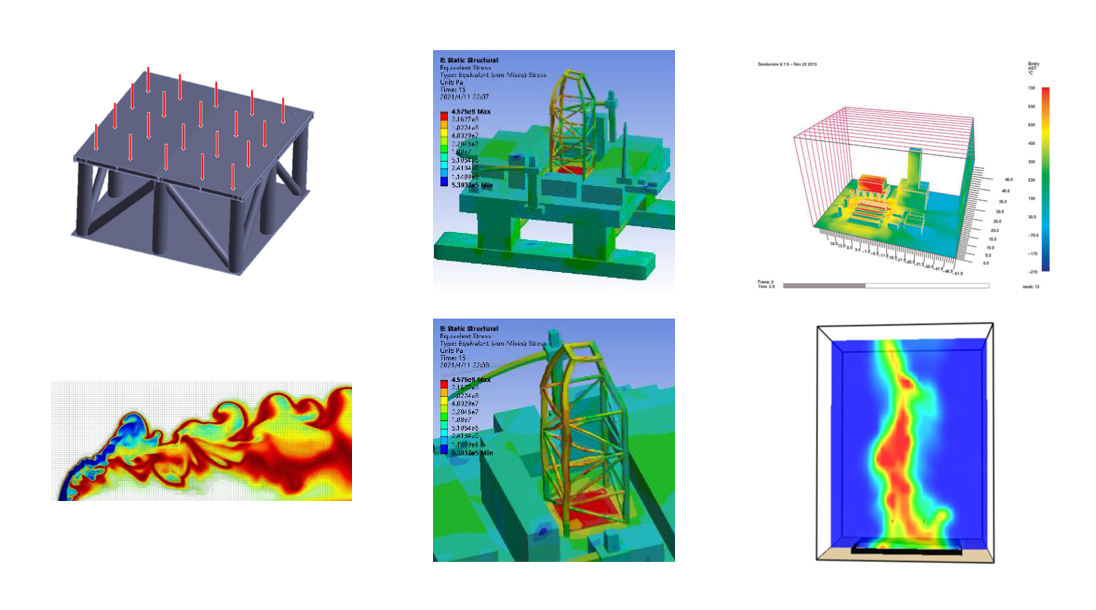Research Group lead: Dr Maryam Ghodrat
"Adaptive design for resilient infrastructure" research group at School of Engineering and Technology, UNSW Canberra, is contributing new theories, models and computational tools for accurate engineering design of vulnerabilities of buildings and infrastructure to natural hazards and man-made disasters"
To maintain the expected service life of the built environment, we need better methods for assessing risk and technical solutions that consider the local climate. ADRI research team at UNSW has expertise in:
- Smart buildings optimization of energy systems
- Risk assessment and vulnerability analyzes
-
Resilience and climate change adaptation
Our research:
Adaptive Design for Resilient Infrastructure (ADRI) research group in School of Engineering at UNSW is contributing new theories, models, and computational tools for accurate engineering design analysis of heat exposure conditions of structures exposed to fire in terms of radiative and convective heat fluxes received by the structure.
Research in the ADRI team ranges from advanced simulation of complex heat transfer theories to solve problems such as combustion dynamics of porous and non porous fuel bed materials, smouldering and behaviour and regime of flame propagation in Wildland Urban Interface
The group is involved in a wide range of cutting edge basic and applied research from nanoscale conduction and radiation to large thermal energy systems.
1-Nearly Zero Energy Buildings (NZEBs) development in Australia
This research theme aims to pioneer an innovative methodological framework for the comprehensive analysis and optimization of emerging renewable energy power plants and zero energy buildings. It involves thermodynamic modeling, economic assessment, and environmental analysis, with a specific focus on electricity generation, cooling, heating, fresh water provision, and hydrogen production. The research is tailored to the unique context of Australian cities, serving as a robust case study for sustainable energy solutions.
2- Structural Fire Engineering "Numerical Modeling"
Structure loss to wildfire is a serious problem in wildland-urban interface areas across the world. While laboratory experiments indicate that fire-resistant building construction and design may play a pivotal role in mitigating structural destruction, it is imperative to assess their effectiveness under actual wildfire scenarios, especially in comparison to other contributing factors. By analysing empirical data from both destroyed and resilient structures in the aftermath of significant wildfires, our objective is to gauge the significance of building construction and structure age in relation to various local and landscape-scale variables associated with the survival of structures.
Our work addresses the characterization of heat exposure conditions of a dwelling in common Australian Wildland Urban Interface scenarios by using three-dimensional, time dependent, computational fluid dynamics fire behaviour model using open source fire dynamic modeling platform called FireFOAM.
"We use open source and commercial software packages for simulating flame spread at the landscape scale, taking into account different zones that a fire burns before it reaches a structure."
While fire has been around since the beginning of man, we still have much to learn about it. The challenge in understanding fire behaviour is due to the highly coupled transport processes of chemical reactions and radiation heat transfer in a turbulent mixing buoyancy driven flow.
At the core of our fire research lies a focus on the fundamental physics underlying fire phenomena. By leveraging insights from fluid mechanics, heat transfer, and combustion, we tackle issues pertaining to fire safety, climate, and public health. "We use numerical modeling techniques to gain a deeper understanding of experiments, while also exploring fire risk and spread."
Our numerical modeling helps us to undertake pioneering research into ignitability and combustion of fuels and their influence on fire spread and intensity. Our research covers a wide range of fire topics, from wildfire behaviour, transition to Wildland-Urban interface areas to fire performance of structural materials.
Fire Safety Design through CFD modeling
Over the past two decades, numerical simulations have played a crucial role in shaping the design of contemporary combustion systems. A notable focus during this period has been on advancing the large eddy simulation (LES) approach, benefiting from the significant increase in computing power to enhance predictive accuracy. Despite the anticipated growth in supercomputing capabilities, the widespread application of LES in design is hampered by its high computational expenses.
While LES has transformed the landscape of computer-guided design through the utilization of supercomputing resources, there arises a necessity for a new generation of numerical methodologies capable of harnessing the abundance of data and accommodating the diverse range of computing hardware. In our research, we aim to propel the development of emerging computational approaches suitable for this heterogeneous data-driven environment. Within this context, unconventional yet promising opportunities emerge for advancing physics-based combustion modeling.
Advanced CFD and Massively parallel computer architectures offer a clear potential for time and cost reductions of the design process by providing accurate predictions.
